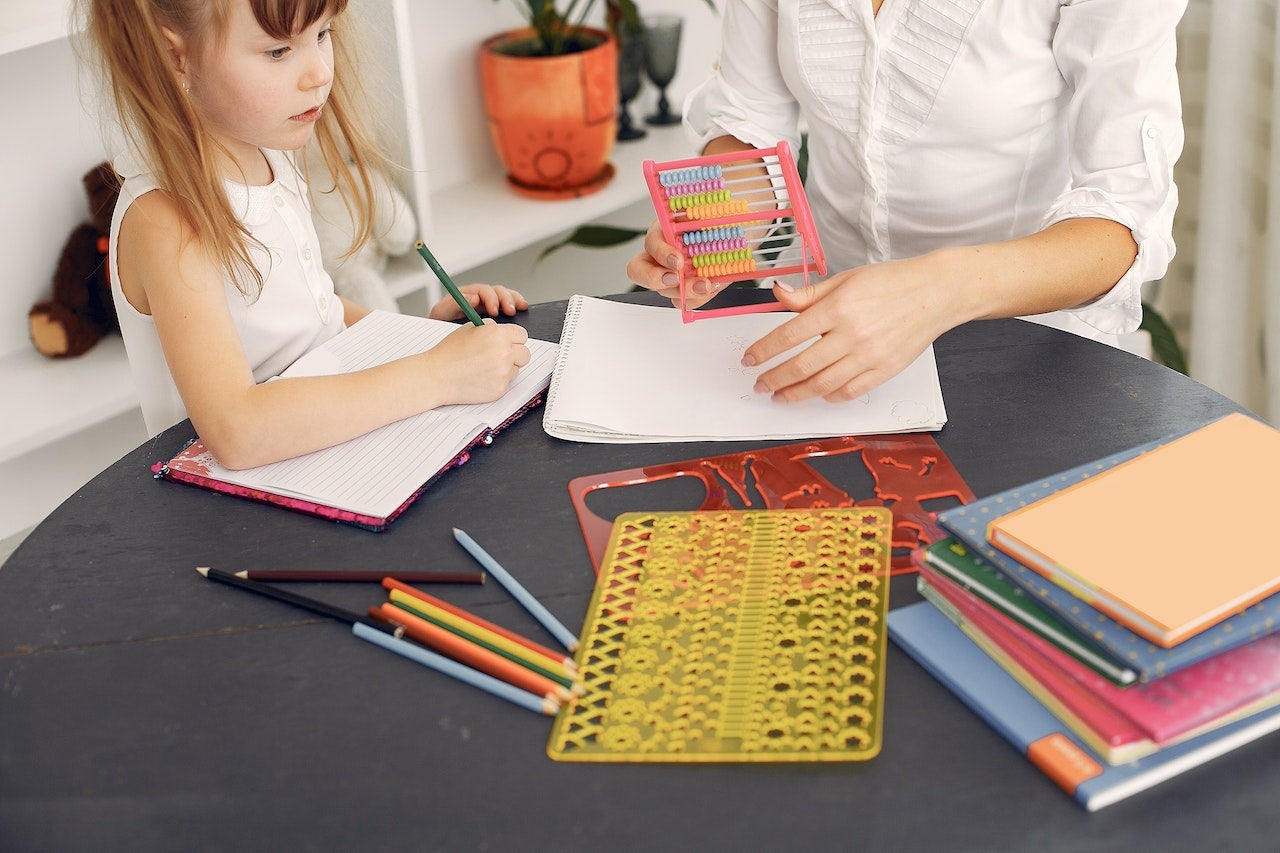Did you know that financial behaviors are set by age seven? Even if a student is receiving a financial literacy education in school, they’re likely not learning important lessons like budgeting, saving, investing, and managing income until high school. By then, they’re already facing tough decisions about how to spend their first paycheck and determining how to afford higher education.

There are many questions parents will ask themselves: When should kids get a debit card? When should we start talking about saving for college? Do they know how to safely spend what they earn? How can I demonstrate healthy financial behaviors?
Money can be difficult to talk about, especially when it can feel like the financial landscape is ever-changing with digital currency and economic uncertainty. However, there are many ways to introduce financial concepts to students of all ages in a fun and relatable way. Some of the best lessons, and most memorable, can be done right at home in ways easier than you’d think.
Scavenger Hunt: Understanding Needs vs Wants
One of the first, and most important, financial lessons we can learn is the difference between needs and wants. When budgeting, it’s important to first allocate money to shelter, food, utilities, medicine, and other needs.
The movie you saw last weekend? An extra treat while grocery shopping? These are our wants. The best way to explore the difference is to practice with real-life memories or things in your own home.
Which is more important: vitamins or a new toy? A blanket for the winter or candy at the movies? If you use it everyday in your home, it’s likely a need.
It’s important to start viewing what we purchase as priorities or not. You can start by having them find items around the house to sort as needs or wants, asking if you need or want something at the grocery store, and sharing your own needs or wants. You need to pay for shelter, and once that is paid for, then we can buy movie tickets.
Meet the SuperSquad: The Online Game Worth the Screen Time
One of the best ways to get students and kids excited about learning is to meet them where they are, align with their own interests, and give them the freedom to explore making different decisions.
Visit $uperSquad financial literacy game for kids to make a free account, and have your K-6 student explore modules, games, and choose-your-own-adventure learning to learn the value of saving, responsible borrowing, how banks and the economy work, and much more.
With new modules and lessons on the way, spending decisions and financial lessons are learned through real-world scenarios. Students can make different decisions and explore how different choices enable different purchases or outcomes.
Save with a Bank: Learning the Value of Saving
One way to start teaching financial literacy at home is by setting up a “pretend” bank account. This can be done with a simple piggy bank or even an empty mason jar. Every time your child earns money through allowance, chores, or gifts, have them deposit it into their “bank.” Once
they’ve saved up enough, they can make withdrawals for items they want to purchase. If they’ve completed the $uperSquad’s banking lesson, they’ll know all about why it’s important to use a bank and not stuff their money under a mattress.
This will help them understand the concept of delayed gratification and that money doesn’t grow on trees! Saving empowers new financial decisions–the sooner we can demonstrate the value it has on financial health, the more inspired they’ll be to put it into practice and explore it further.
A Lesson for a Lifetime: Discuss Your Own Budgeting
A budget is a great starting point once they understand the value of money and how to decide between needs and wants. Another activity you can do is create a “family budget.” Sit down with your child and discuss your family’s regular income and expenses. Help them understand that there is a limit to what you can spend each month and that some of your income needs to go towards savings or investments. You can also involve your child in the decision-making process when it comes to big purchases.
For example, if you’re debating whether or not to buy a new car, have your child research the pros and cons with you. This will teach them about the importance of being an informed consumer. It’ll also show them the power of saving–and that big purchases are big decisions.
Influence on Spending: Advertisements Are Everywhere
Advertising and marketing change a lot of our spending habits. Kids are more exposed to ads and promotions than we may realize.
Next time they ask for something, ask them where they heard of it. It’ll likely be from an ad they saw. Start pointing out together different kinds of advertisements: billboards, coupons, magazines, TV, radio, social media, YouTube, and more.
Seeing an ad can be tempting, but once they know they are trying to change the way we spend, we can share that they shouldn’t influence how we spend. Our budget is still the same, but we can pivot what we’re saving for.
Vending Machine: An At-Home Way to Learn What “Cost” Really Means
Create your own vending machine or store with items in your house. Decide how much each item costs, make labels or price tags if you like, and then practice different ways of adding up paper money and coins to “purchase” the items.
In a real store, try to guess how much items cost before looking at their price tags. See if you can put them in order from least to most expensive. Then check to see if you were right, and discuss any surprises.
There’s no one right way to begin teaching the value of money–only the right time. And that time should be today. The earlier we begin teaching, introducing, and practicing healthy financial skills, the more promising a financially fit future we can build for everyone.
There are many other ways to get creative with financial literacy at home. The key is to make it fun and relatable for your child. With a little effort, you can help set them up for success later in life!
About the Author
Jessica Pelletier is the executive director of FitMoney, a non-profit organization that advocates for financial literacy education starting in kindergarten. She grew up in Boston, MA, and is a graduate of Boston Latin School and Boston College. With over 20 years of non-profit, private, and political experience, she previously worked as Co-National Director at Right to Play and has been a long-time youth and educational advocate for further financial literacy education expansion.
You Might Also Like
April 17, 2023
Budgeting and Saving Money
April 3, 2023
Budgeting and Saving Money
March 8, 2023
Budgeting and Saving Money







